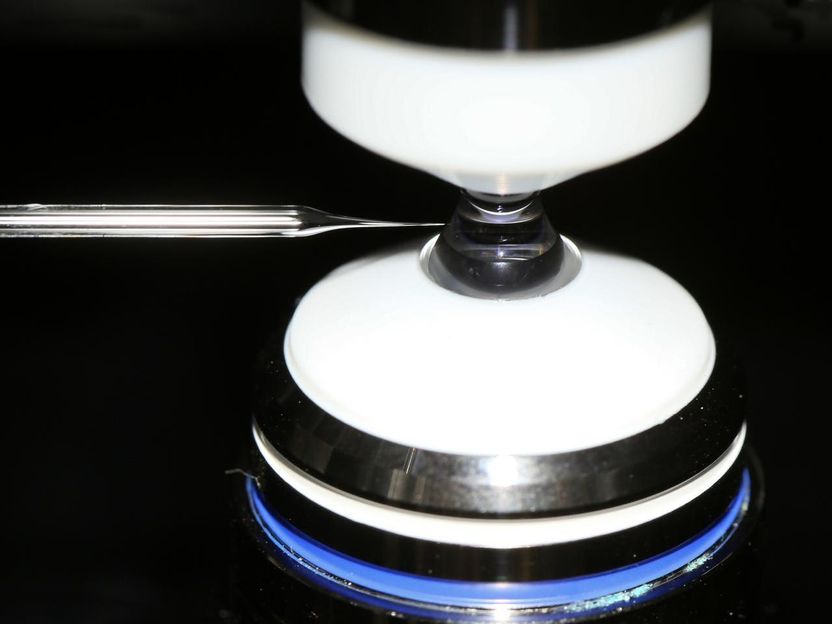3-D imaging of surface chemistry in confinement
Advertisement
EPFL researchers have developed an optical imaging tool to visualize surface chemistry in real time. They imaged the interfacial chemistry in the microscopically confined geometry of a simple glass micro-capillary. The glass is covered with hydroxyl (-OH) groups that can lose a proton - a much-studied chemical reaction that is important in geology, chemistry and technology. A 100-micron long capillary displayed a remarkable spread in surface OH bond dissociation constant of a factor of a billion.

Scientists imaged the interfacial chemistry in the microscopically confined geometry of a simple glass micro-capillary.
EPFL / Alain Herzog
Geological, catalytic, biological and chemical processes are driven by surface chemical heterogeneities, electrostatic fields and flow. To understand these processes and to enable the further development of new materials and microtechnology, researchers at EPFL's Laboratory for Fundamental BioPhotonics (LBP) have designed a microscope that can track, in real time, three-dimensional spatial changes in the molecular structure and chemistry of confined systems, such as curved surfaces and pores. The microscope was used to image the surface chemical structure of the inside of a glass microcapillary. Surface potential maps were constructed from the millisecond images, and the chemical reaction constant of each 188nm-wide pixel was determined. Surprisingly, this very simple system - which is used in many devices - displayed a remarkable spread in surface heterogeneity. The researchers' findings have been published in Science. Their method will be a boon for understanding fundamental (electro)chemical, geological and catalytic processes and for building new devices.
Second-harmonic imaging
Sylvie Roke, director of the Julia Jacobi Chair of Photomedicine at EPFL, has developed a unique set of optical tools to study water and aqueous interfaces on the nanoscale. She uses second-harmonic and sum-frequency generation, which are optical processes in which two photons of a certain color are converted into a new color. "The second-harmonic process involves 1000 nm femtosecond photons - that is, 0.00000000000001-second bursts of light - being converted into 500 nm photons, and this occurs only at interfaces," says Roke. "It is therefore ideal for interfacial microscopy. Unfortunately, the process is very inefficient. But by using a number of optical tricks, such as wide field imaging and light shaping, we were able to enhance both the imaging throughput and the resolution, bringing the time to record an image down from minutes to 250 milliseconds."
Surprising surface chemistry
The researchers then imaged the deprotonation reaction of the inner silica capillary/water interface in real time. Silica is one of the most abundant minerals on earth, and its interaction with water shapes our climate and environment. Although many researchers have characterized the properties of the silica/water interface, there is no consensus on its chemical reactivity. Roke continues: "Our data shows why there is a remarkable spread in surface reactivity, even on a very small portion of a capillary. Our data will help in the development of theoretical models that are more effective at capturing this surprising complexity. In addition, our imaging method can be used for a wide variety of processes, such as for analyzing the real-time functioning of a fuel cell, or for seeing which structural facet of a mineral is most chemically active. We could also gain more insight into nanochannels and both artificial and natural pores.






























































